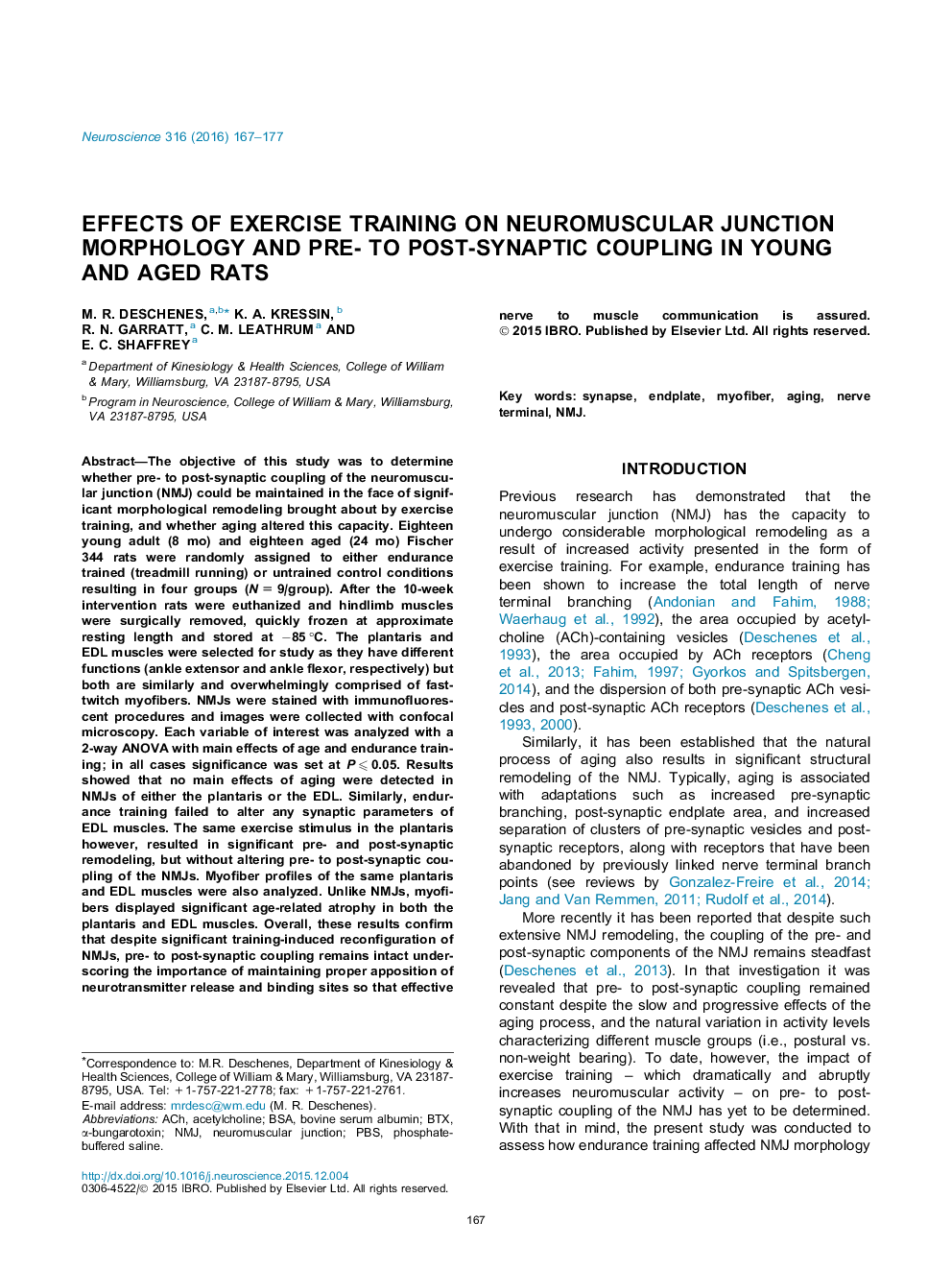| کد مقاله | کد نشریه | سال انتشار | مقاله انگلیسی | نسخه تمام متن |
|---|---|---|---|---|
| 6271416 | 1614760 | 2016 | 11 صفحه PDF | دانلود رایگان |
- Exercise training elicits remodeling of NMJs in young, but not aged animals.
- Exercise training remodels NMJs in the plantaris muscle, but not the EDL muscle.
- Despite NMJ remodeling due to exercise, pre- to post-synaptic coupling is unchanged.
- Myofibers of plantaris and EDL muscles show effects of aging, unlike their NMJs.
The objective of this study was to determine whether pre- to post-synaptic coupling of the neuromuscular junction (NMJ) could be maintained in the face of significant morphological remodeling brought about by exercise training, and whether aging altered this capacity. Eighteen young adult (8 mo) and eighteen aged (24 mo) Fischer 344 rats were randomly assigned to either endurance trained (treadmill running) or untrained control conditions resulting in four groups (N = 9/group). After the 10-week intervention rats were euthanized and hindlimb muscles were surgically removed, quickly frozen at approximate resting length and stored at â85 °C. The plantaris and EDL muscles were selected for study as they have different functions (ankle extensor and ankle flexor, respectively) but both are similarly and overwhelmingly comprised of fast-twitch myofibers. NMJs were stained with immunofluorescent procedures and images were collected with confocal microscopy. Each variable of interest was analyzed with a 2-way ANOVA with main effects of age and endurance training; in all cases significance was set at P ⩽ 0.05. Results showed that no main effects of aging were detected in NMJs of either the plantaris or the EDL. Similarly, endurance training failed to alter any synaptic parameters of EDL muscles. The same exercise stimulus in the plantaris however, resulted in significant pre- and post-synaptic remodeling, but without altering pre- to post-synaptic coupling of the NMJs. Myofiber profiles of the same plantaris and EDL muscles were also analyzed. Unlike NMJs, myofibers displayed significant age-related atrophy in both the plantaris and EDL muscles. Overall, these results confirm that despite significant training-induced reconfiguration of NMJs, pre- to post-synaptic coupling remains intact underscoring the importance of maintaining proper apposition of neurotransmitter release and binding sites so that effective nerve to muscle communication is assured.
Journal: Neuroscience - Volume 316, 1 March 2016, Pages 167-177
